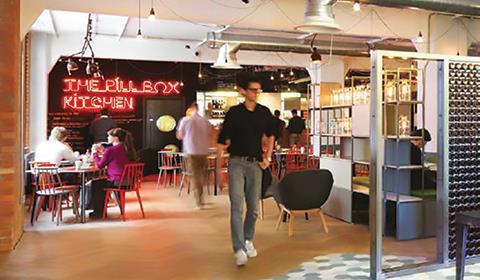Harnessed correctly, occupier data has the potential to transform business strategy and help landlords better adapt to their customers’ rapidly changing needs.

It may sound obvious, but it’s crucial to think of your tenants as individuals, each with their own unique ambitions, routines and requirements, and not just as a number of leases.
Workplace technology gives us a window into the people behind each business and how they work.
The 4,000 businesses in Workspace’s properties operate across the economic spectrum with companies from 50 different sectors, from business consultancy to fashion. And while the number of tech firms using our space is a minority, all of our customers need tech to do business.
In fact, connectivity is the lifeblood of the businesses using our space - it has a direct impact on employee productivity, business efficiency and the pace of growth. It is instrumental in allowing all businesses, large or small, to compete on a global scale.

Yet despite London’s status as one of the world’s fastest-growing digital hubs, there are great discrepancies in the connectivity available. This variability, combined with the crucial role technology plays in powering success, means tech has quickly become a key criteria for businesses when selecting new facilities.
For those not converted to the advantages of offering a best-in-class technological infrastructure there is another sweetener. It provides access to a wealth of information on the businesses that use it, which can be harnessed to offer an intimate understanding of their needs and to adapt the properties as required. But all too often as an industry we ignore it.
One size does not fit all
Analysing customer data can and should have an impact on every aspect of a business. It can promote seamless property management, help to attract new customers and ensure efficient capital and operational expenditure.
Through the analysis of this treasure trove of information, workspaces can grow and innovate with the businesses that use them every day. This means we can create spaces that adapt according to their needs, at their pace of change.
We are experiencing it first hand at Workspace. On the simplest level, the data we analyse allows us to manage our environments to align with occupants’ behaviour and needs. This could mean using insights into footfall to increase the number of breakout areas on a particular floor or organising networking events to coincide with natural break times.

The analysis could even help us to make decisions on whether we really need toilet facilities on each floor.
In short, it might allow us to shape the events, activities and initiatives we offer in each location - tailoring them to offer maximum value to occupying businesses.
We can develop workspaces that are uniquely fit for the businesses that will use them
But most importantly, it means we can develop workspaces that are uniquely fit for the businesses that will use them. These businesses might need bigger collaboration spaces, more conference rooms or further investment in resilient technology.
Finally, on a purely financial level, this use of big data allows us to run more efficient business centres that deliver only what customers need. In this way, we can also reduce operational expenditure and invest where most essential.
Office space providers must be able to create spaces that not only meet their customers’ needs but are also able to change with them. We must match our customers’ agility - and big data is the most powerful weapon in our arsenal.






























No comments yet